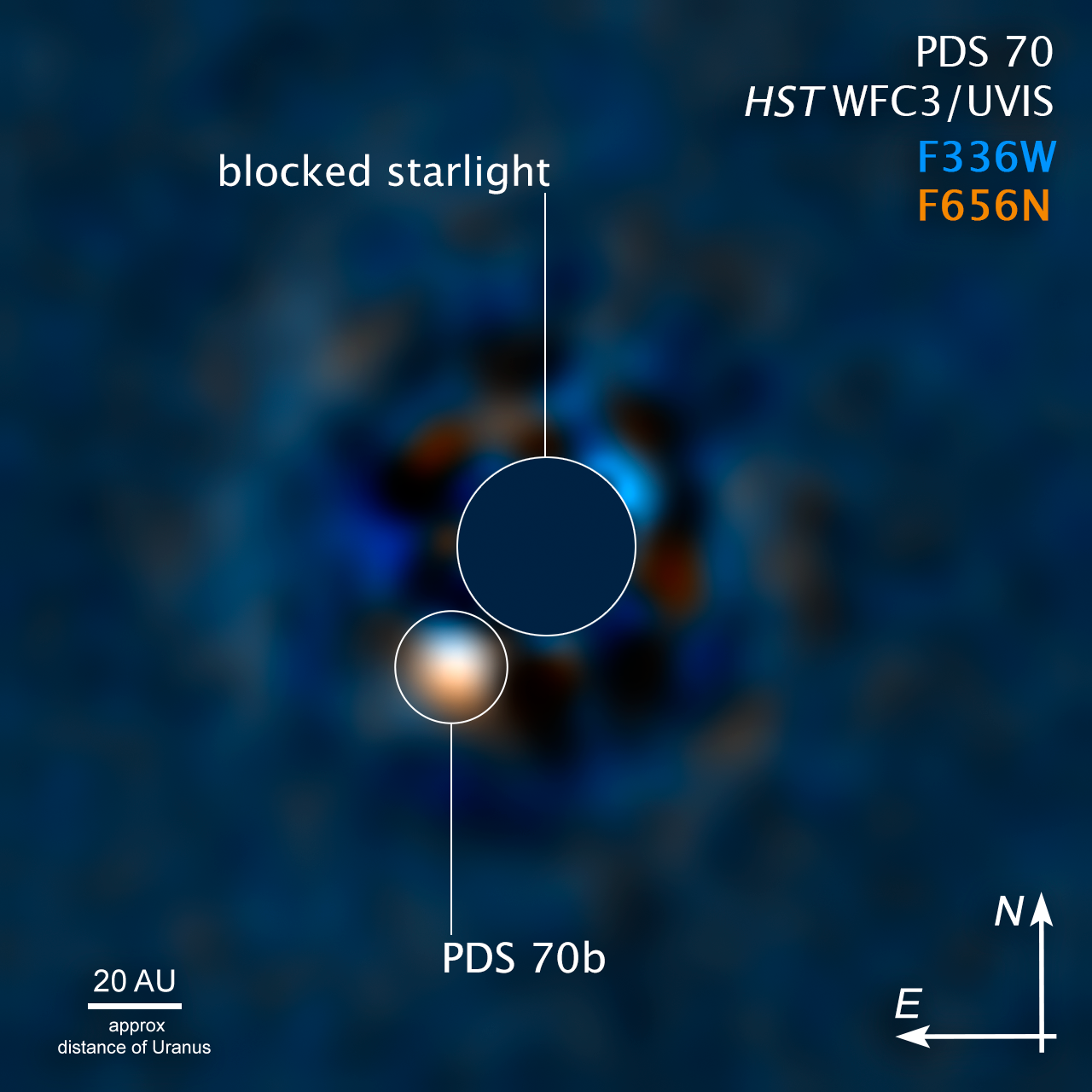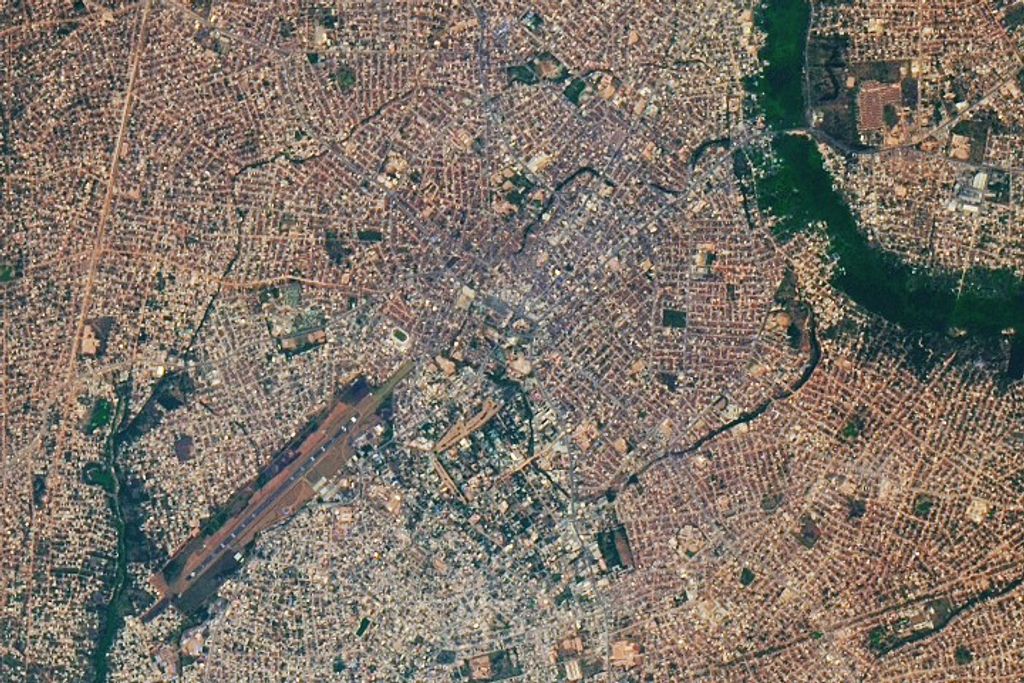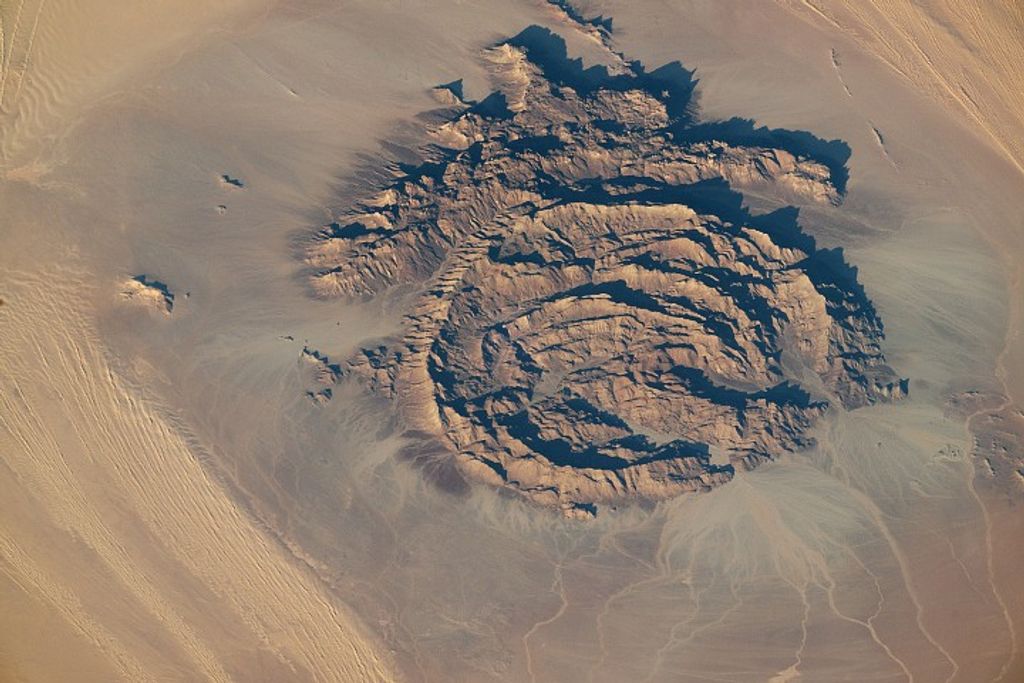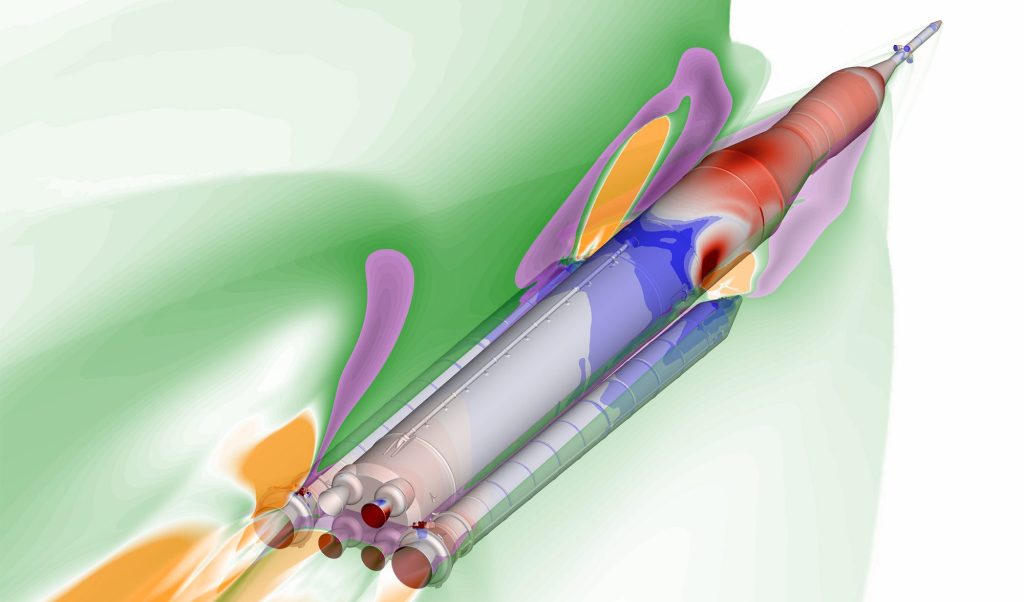1 min read
PDS 70 Hubble Image

Hubble observations pinpoint planet PDS 70b. The glare of the central star was blocked out for the planet to be directly observed. Though over 4,000 exoplanets have been cataloged so far, only about 15 have been directly imaged to date by telescopes. The team’s fresh technique for using Hubble to directly image this planet paves a new route for further exoplanet research, especially during a planet’s formative years.
About the Object
- R.A. PositionR.A. PositionRight ascension – analogous to longitude – is one component of an object's position.14:08:10.15
- Dec. PositionDec. PositionDeclination – analogous to latitude – is one component of an object's position.-41:23:52.58
- ConstellationConstellationOne of 88 recognized regions of the celestial sphere in which the object appears.Centaurus
- DistanceDistanceThe physical distance from Earth to the astronomical object. Distances within our solar system are usually measured in Astronomical Units (AU). Distances between stars are usually measured in light-years. Interstellar distances can also be measured in parsecs.370 light-years
About the Data
- Data DescriptionData DescriptionProposal: A description of the observations, their scientific justification, and the links to the data available in the science archive.
Science Team: The astronomers who planned the observations and analyzed the data. "PI" refers to the Principal Investigator.The Hubble image was created from HST data from proposal: 15830 (Y. Zhou)
- InstrumentInstrumentThe science instrument used to produce the data.WFC3/UVIS
- Exposure DatesExposure DatesThe date(s) that the telescope made its observations and the total exposure time.07 Feb - 03 Jul 2020
- FiltersFiltersThe camera filters that were used in the science observations.F336W, F656N
- Object NameObject NameA name or catalog number that astronomers use to identify an astronomical object.PDS 70b
- Object DescriptionObject DescriptionThe type of astronomical object.Extrasolar Planet
- Release DateApril 29, 2021
- Science ReleaseHubble Watches How a Giant Planet Grows
- CreditImage Processing: Joseph DePasquale (STScI)

These images are a composite of separate exposures acquired by the WFC3 instrument on the Hubble Space Telescope. Several filters were used to sample narrow wavelength ranges. The color results from assigning different hues (colors) to each monochromatic (grayscale) image associated with an individual filter. In this case, the assigned colors are: Cyan: F336W Orange: F656N

Related Images & Videos

Protoplanetary Disk Around PDS 70
The European Southern Observatory’s Very Large Telescope caught the first clear image of a forming planet, PDS 70b, around a dwarf star in 2018. The planet stands out as a bright point to the right of the center of the image, which is blacked out by the coronagraph mask used to...
Share
Details
Claire Andreoli
NASA’s Goddard Space Flight Center
Greenbelt, Maryland
claire.andreoli@nasa.gov
NASA, ESA, McDonald Observatory?University of Texas, Yifan Zhou (UT Austin)
Joseph DePasquale (STScI)































